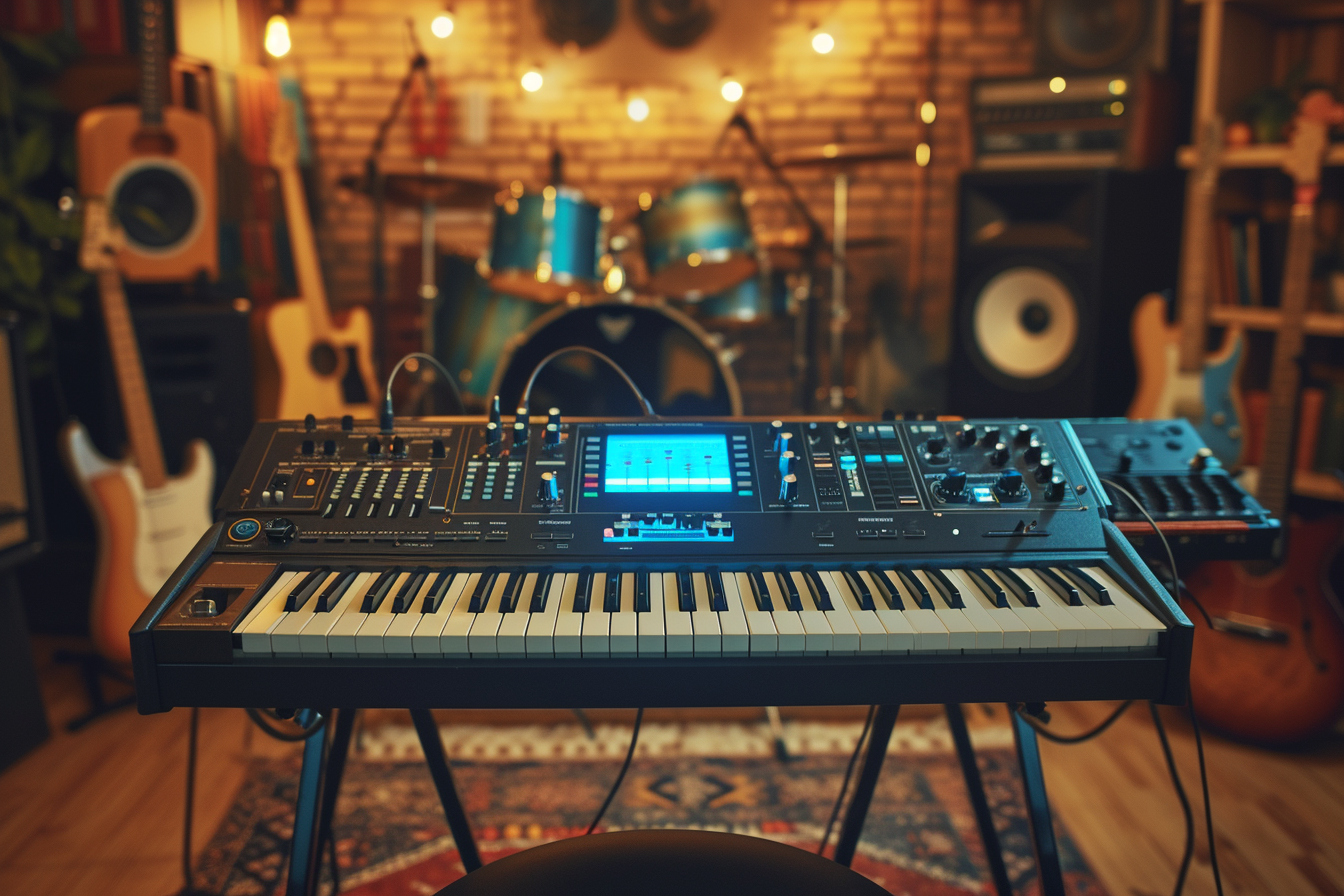When it comes to crafting the perfect sound, the synthesizer you choose plays a pivotal role. Musicians, producers, and enthusiasts alike understand that a synthesizer is not just an instrument—it’s a gateway to an expansive universe of sonic possibilities. With the vast array of synthesizers available, selecting the ideal one can be both an exciting and daunting task. Herein, we’ll explore the essential factors to consider ensuring you find a synthesizer that harmonizes with your musical needs and aspirations.
Understanding different types of synthesizers
Analog vs. Digital: A Sonic Debate
Before delving into specific functions and features, it’s vital to grasp the fundamental difference between analog and digital synthesizers. Analog synthesizers use electronic circuits and analog signals to produce sounds that are warm and rich with harmonic overtones. Their digital counterparts, meanwhile, utilize computer algorithms and often offer a broader range of sounds and features. Preferences can be subjective, so it’s beneficial to play both types and listen carefully to decide which meets your tonal requirements.
Modular Synthesizers: Customizable Soundscapes
For those craving the utmost in flexibility, modular synthesizers provide a system where you can mix and match different components (modules) to create unique setups. It requires a deeper understanding of signal flow and sound design, so be prepared for a steeper learning curve if you choose this path.
Software Synthesizers: In-the-Box Innovation
Advances in technology have brought about highly sophisticated software synthesizers that can be used within digital audio workstations (DAWs). If you’re operating in a space-conscious or budget-restricted environment, these may offer a happy medium between practicality and creative potential.
Key features and specifications

Polyphony: From Monophonic Melodies to Chordal Cascades
One of the first specifications you should check is polyphony—the number of notes a synthesizer can produce simultaneously. Monophonic synthesizers allow you to play one note at a time, ideal for bass lines and solos, while polyphonic models let you play chords and layered textures. Decide what your music demands and choose accordingly.
Sound Engine and Synthesis Methods
The sound engine is the heart of any synthesizer, and understanding the synthesis method is key to achieving your desired sound. Subtractive synthesis is one of the most common types, shaping sounds by filtering frequencies from generated waveforms. FM synthesis, wavetable synthesis, and granular synthesis are other methods that offer different sound palettes and creative opportunities.
Oscillators and Filters: Tailoring Your Tone
Oscillators generate the raw waveforms that form the foundation of your sound, while filters sculpt and fine-tune the harmonic content. Look for synthesizers that offer multiple oscillator types and the ability to manipulate waveforms extensively. Filters should also be a focal point—particularly the slope and type (low-pass, high-pass, band-pass, etc.)—as they significantly shape the character of the sound.
Modulation and Control Sources
Synthesizers with comprehensive modulation options—like LFOs (low-frequency oscillators), envelopes, and step sequencers—provide dynamic control over various parameters. This depth of modulation capability allows for evolving, expressive sounds.
User Interface and Workflow
The user interface determines how intuitively you can navigate and manipulate the synthesizer. A well-designed layout with hands-on controls can drastically enhance the creative workflow, while a cluttered or confusing interface may stifle it.
Connectivity and Integration
In today’s connected world, it’s imperative to select a synthesizer that fits seamlessly into your existing setup. Consider the variety of inputs/outputs, MIDI implementation for communication with other gear, and CV/Gate options for interfacing with modular systems or vintage equipment.
Practical considerations
Size and Portability
Think carefully about where and how you’ll be using your synthesizer. Studio-bound musicians might prefer larger, more feature-rich options, while gigging artists may need something compact and light for easy transportation.
Budget Constraints
Your financial situation will undoubtedly influence your decision. Luckily, with the wide range of synthesizers on the market, it’s possible to find a suitable option at almost any price point. Invest in quality where it counts, but remember that more expensive does not always equate to better for your unique needs.
Support and Community
Finally, consider the manufacturer’s reputation for customer support and the presence of a user community. Access to resources, tutorials, and a network of fellow enthusiasts can make a world of difference as you embark on your sonic journey.
Musicians in search of the perfect synthesizer must weigh these key factors meticulously. Explore and experiment with different types and brands to find the one that resonates with your artistic voice. With technology evolving rapidly, the key is to select a synthesizer that not only sounds right today but will continue to inspire and grow with you for years to come.